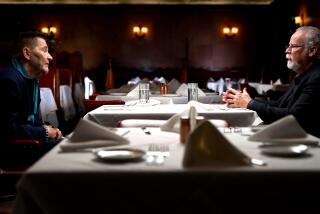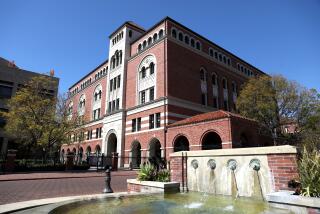Judge to Allow Re-Enactment of Westlake Nurse’s Killing : Trial: One ruling on defense motions favors Thousand Oaks defendant: Slaying cannot be called ‘execution’ before jury.
- Share via
On the eve of his murder trial, Mark Scott Thornton of Thousand Oaks was hit with a series of unfavorable court rulings Monday, including one that allows prosecutors to use a controversial photo re-enactment of Westlake nurse Kellie O’Sullivan’s slaying.
In the re-enactment, photos show the victim being shot once in the chest and twice in the back after her attacker orders her to kneel in front of him, attorneys said.
Two legal scholars, contacted after the ruling in Ventura County Superior Court, said it is unusual for prosecutors to re-enact crimes with still photographs, rather than the more commonly used videotapes or computer simulations.
With still pictures, “I would be concerned whether any individual photograph would be misleading,” said Southwestern University of Law professor Myrna Raeder.
Raeder and Laurie L. Levinson, a Loyola University law professor, said jurors could easily take such pictures out of context.
But Levinson said a re-enactment based on still photographs might actually be less prejudicial to a defendant’s case than videotape--which, she said, jurors can sometimes put too much faith in. “A videotape can be be too TV-like,” Levinson said.
Outside court, Thornton lawyer Howard J. Asher questioned whether prosecutors could accurately piece together any credible re-enactment of the O’Sullivan murder, since there were no witnesses to the Sept. 14, 1993, shooting.
“They’re basing it on a theory that in large part is speculation as to how Kellie O’Sullivan died,” Asher said. “I think there is no solid basis for it. Therefore, there is a danger of it being misused by the jury.”
*
Prosecutors say Thornton kidnaped the 34-year-old O’Sullivan in broad daylight and took her to the Santa Monica Mountains in Los Angeles County, where she was fatally shot. He then stole her car, abducted his teen-age girlfriend and shot at the girl’s mother, they said. His jury trial begins with opening statements this morning.
Deputy Dist. Atty. Peter D. Kossoris, lead prosecutor on the case, declined to discuss the re-enactment outside court.
But Chief Deputy Dist. Atty. Kevin J. McGee said the Thornton trial will not be the first time that local prosecutors have used still photographs to re-enact a crime for a jury.
“It’s something that is a cutting-edge kind of technology that is being used more and more in court by both sides,” said McGee, declining to answer specific questions about the Thornton prosecution. “It’s obvious that pictures make a case more understandable. And people relate to things they see on TV.”
In addition to the ruling on the photo re-enactment, McGrath made three other decisions on last-minute defense motions in the Thornton case Monday.
The judge denied a motion to keep from the jury incriminating statements Thornton’s grandmother made about her grandson. The judge also denied a defense motion that would have prohibited a probation officer from testifying about Thornton’s criminal record as a juvenile.
In the lone victory Monday for the defense, the judge instructed prosecutors not to refer to O’Sullivan’s slaying in front of the jury as an “execution.”
On the re-enactment matter, Asher argued that the only evidence supporting the prosecution’s depiction of the killing “is the angle of the bullets.”
*
But he argued that without other evidence, such as a witness to the killing, the re-enactment lacks any foundation.
Deputy Dist. Atty. Michael K. Frawley, however, said the re-enactment would only be a guide for the jury.
“They just don’t want us to present our evidence to the jury, that’s what it boils down to,” Frawley told Judge McGrath.
Agreeing with Frawley, McGrath said, “I think there is sufficient evidence to support the people’s theory.”
More to Read
Sign up for Essential California
The most important California stories and recommendations in your inbox every morning.
You may occasionally receive promotional content from the Los Angeles Times.













